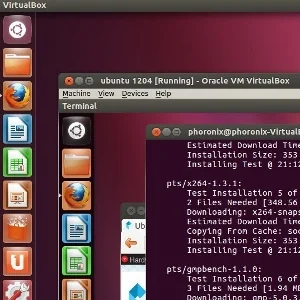QEMU 1.0 Is Coming Quite Soon

QEMU 1.0 is expected to be tagged on the first of December. New features to QEMU 1.0 will be a new memory API, support for the Tensilica Xtensa, SCSI improvements, and a Tiny Code Interpreter (TCI).
The new memory API more closely mirrors the way memory is implemented on modern computer systems. The Tennsilica Xtensa is a processor commonly found on embedded systems, but can now be emulated by QEMU. The SCSI improvements come via developing a new "virtio-scsi" stack as a replacement to the old and restrictive virtio-block implementation. Improvements to the SCSI support for QEMU 1.0 in the development of virtio-scsi includes better modelling of SCSI requests, flexible SCSI addressing, improved consistency against the SCSI specification, improved support for emulated SCSI CD-ROMs, and migration support.
QEMU's Tiny Code Interpreter is a new and experimental feature to improve the TCG code generator on 32-bit and 64-bit hosts. The Tiny Code Interpreter is described as, "Previous to TCI, the code generator, known as TCG, only allowed qemu to run on the most important host architectures such as x86, arm, mips, s390 and sparc. TCI will not create native code but rather bytecode which is interpreted so it will not depend on the host running qemu. The idea is that by adding a code generator for some virtual machine and using an interpreter for the generated bytecode, you can support almost any host. The only difference to running qemu with or without TCI will be speed."
More details about the pending release of QEMU 1.0 can be found on Linux-KVM.com.
6 Comments

